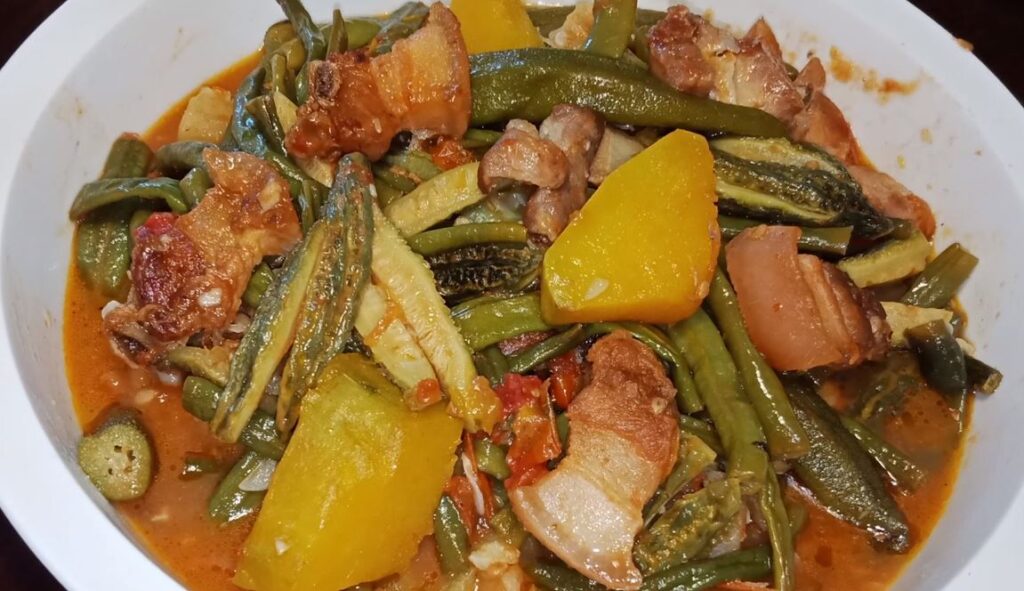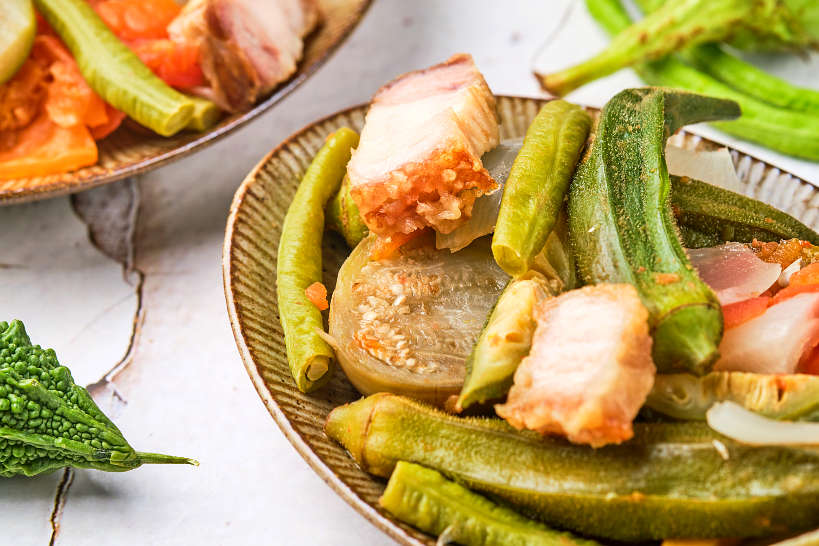Pinakbet: A Culinary Journey Through Ilocano Flavors
Pinakbet: A Culinary Journey Through Ilocano Flavors
Pinakbet: A Culinary Journey Through Ilocano Flavors

Pinakbet, a beloved dish in the Philippines, is a testament to the country’s rich culinary heritage. This vegetable stew, particularly popular in the Ilocos region, embodies the essence of Filipino cooking: simplicity, resourcefulness, and a celebration of local ingredients.
A History of Flavors:
Pinakbet’s origins can be traced back to the pre-colonial era, where indigenous Filipinos relied heavily on readily available produce. The dish’s name itself, derived from the Ilocano word "pinakbet," signifies the act of "mixing" or "combining" – a perfect reflection of the dish’s diverse ingredients.
The Ilocos region, known for its fertile plains and coastal areas, provided a bountiful supply of vegetables, which formed the core of pinakbet. These included bitter melon (ampalaya), eggplant (talong), squash (kalabasa), okra (okra), and green beans (sitaw). The dish’s signature flavor profile, however, is attributed to the addition of "bagoong," a fermented shrimp paste that adds a distinct umami depth.
Beyond the Basics:
Table of Content
While the traditional pinakbet recipe remains simple and straightforward, variations abound across the Philippines. Each region and household adds its own unique touch, resulting in a diverse array of pinakbet interpretations.
In Ilocos Sur, for example, the addition of "patis," a fermented fish sauce, adds a tangy dimension to the dish. In other areas, pork or seafood may be incorporated, offering a more substantial protein element.
A Culinary Canvas:
The beauty of pinakbet lies in its versatility. It serves as a blank canvas for culinary creativity, allowing chefs and home cooks to experiment with different vegetables, spices, and protein sources.
For those seeking a lighter option, a vegetarian pinakbet can be prepared using tofu or tempeh as a protein substitute. For a heartier meal, pork belly, chicken, or even seafood can be added to the mix.

The Ilocano Experience:
Beyond its culinary appeal, pinakbet represents a cultural touchstone for Ilocanos. It evokes memories of family gatherings, festive celebrations, and the simple joys of sharing a meal with loved ones.
- A Salad Odyssey: Exploring Chick-fil-A’s Ensaladas
- Baba Fried Chicken: A Review From The Road
- The Wagyu Cut: A Deep Dive Into The World Of Wagyu Beef
- Perbedaan Wagyu Sirloin Dan Tenderloin
- A Taste Of Tradition: Exploring The World Of Nama Vegetables
The dish’s popularity extends beyond the Ilocos region, finding its way onto tables across the Philippines. It is often served as a side dish alongside rice and grilled fish, or as a main course with a variety of sauces and dips.
A Recipe for Success:
Preparing pinakbet is a simple yet rewarding endeavor. Here’s a traditional Ilocano recipe to get you started:

Ingredients:
- 1 cup bitter melon (ampalaya), sliced
- 1 cup eggplant (talong), sliced
- 1 cup squash (kalabasa), cubed
- 1 cup okra (okra), whole
- 1 cup green beans (sitaw), cut into 1-inch pieces
- 1/2 cup bagoong alamang (fermented shrimp paste)
- 1/4 cup patis (fermented fish sauce)
- 1 onion, chopped
- 2 cloves garlic, minced
- 1 tablespoon cooking oil
- Salt and pepper to taste
Instructions:
- Heat the cooking oil in a large pot or wok over medium heat.
- Add the onion and garlic and sauté until fragrant.
- Add the bitter melon, eggplant, squash, okra, and green beans. Stir-fry for 5 minutes.
- Add the bagoong alamang and patis. Stir well.
- Add 1 cup of water and bring to a boil.
- Reduce heat to low and simmer for 15 minutes, or until the vegetables are tender.
- Season with salt and pepper to taste.
Serving Suggestions:
Pinakbet is best served hot with steamed rice. It can also be enjoyed with a variety of sauces and dips, such as vinegar with garlic and chili peppers, or a simple soy sauce and vinegar mixture.
A Culinary Legacy:
Pinakbet is more than just a dish; it’s a symbol of Filipino resilience, adaptability, and a deep appreciation for the bounty of nature. It’s a reminder that even the simplest ingredients can be transformed into a culinary masterpiece, reflecting the unique flavors and traditions of a vibrant culture.
Beyond the Plate:
The impact of pinakbet extends beyond the culinary realm. It has become a source of inspiration for artists, writers, and musicians, who have used the dish as a metaphor for the richness and diversity of Filipino culture.
A Culinary Journey:
For those seeking a deeper understanding of Filipino cuisine, embarking on a culinary journey through pinakbet is a must. From the simple act of preparing the dish to savoring its unique flavors, each step offers a glimpse into the heart and soul of Ilocano culture.
A Culinary Treasure:
Pinakbet, a humble vegetable stew, stands as a testament to the culinary ingenuity and cultural heritage of the Philippines. It is a dish that continues to delight generations, reminding us of the power of simple ingredients, the importance of tradition, and the enduring legacy of Filipino cuisine.
Beyond the Recipe:
The true essence of pinakbet lies not just in the recipe but in the stories it evokes, the memories it stirs, and the connections it fosters. It’s a dish that transcends the boundaries of taste and becomes a symbol of shared experiences, cultural identity, and the enduring spirit of Filipino hospitality.
A Culinary Legacy for the Future:
As the world continues to explore the diverse flavors of Filipino cuisine, pinakbet is poised to take its rightful place on the global culinary stage. Its simple yet satisfying flavors, its versatility, and its deep cultural significance ensure that this beloved dish will continue to be enjoyed and celebrated for generations to come.
sure
Thus, we hope this article has provided valuable insights into Pinakbet: A Culinary Journey Through Ilocano Flavors. We hope you find this article informative and beneficial. See you in our next article!
Posting Komentar untuk "Pinakbet: A Culinary Journey Through Ilocano Flavors"